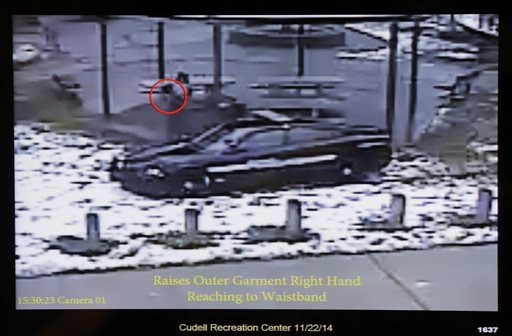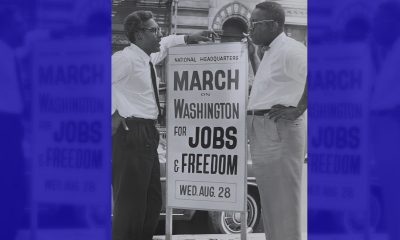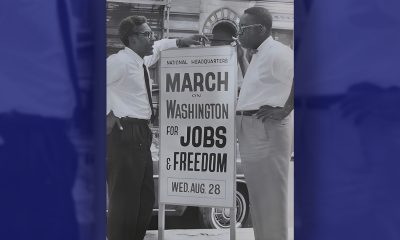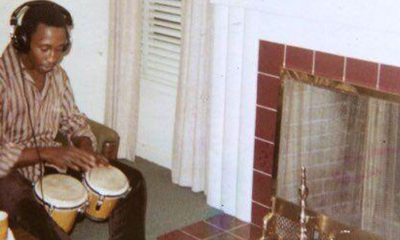National
Judge: Enough Evidence to Charge Police in Black Boy’s Death


This Nov. 26, 2014 file photo shows a still image taken from a surveillance video that was played at a news conference held by Cleveland Police. It shows Cleveland police officers arriving at Cudell Park on a report of a man with a gun. A judge has ruled that evidence exists to charge two police officers in the fatal shooting of a 12-year-old boy who was holding a pellet gun outside a recreation center, Thursday, June 11, 2015. (AP Photo/Mark Duncan, File)
MARK GILLISPIE, Associated Press
CLEVELAND (AP) — A judge said Thursday that enough evidence exists to charge two white policemen in the fatal shooting of a 12-year-old black boy who was holding a pellet gun, a largely symbolic ruling because he can’t compel prosecutors to charge them.
Municipal Court Judge Ronald Adrine ruled there’s probable cause to charge rookie officer Timothy Loehmann with murder, involuntary manslaughter, reckless homicide or dereliction of duty in the November shooting death of Tamir Rice. And he ruled there’s evidence to charge Loehmann’s partner, Frank Garmback, with reckless homicide or dereliction of duty.
The judge made his ruling after activists submitted affidavits asking the court to rule there’s enough evidence to charge the officers in Tamir’s death, which has spurred protests and complaints about the treatment of blacks by police.
“This court reaches its conclusions consistent with the facts in evidence and the standard of proof that applies at this time,” the judge wrote.
The Cuyahoga County Sheriff’s Department recently completed its investigation and gave its file to the county prosecutor, whose staff is reviewing the case while preparing to take it to a grand jury to determine if criminal charges should be filed.
Cuyahoga County prosecutor Tim McGinty said Thursday that this case, like all other fatal use-of-deadly-force cases involving law enforcement officers, will go to a grand jury.
“Ultimately,” he said, “the grand jury decides whether police officers are charged or not charged.”
The killing of Tamir has become part of a national outcry about minorities, especially black boys and men, dying while in police custody. Cleveland and the U.S. Department of Justice are moving forward on a reform-minded consent decree after a DOJ investigation found Cleveland police had engaged in a practice of using excessive force and violating people’s rights.
A Rice family attorney, Walter Madison, said the judge’s ruling Thursday was “historic.”
“I think it’s a blueprint for the rest of the nation with respect to citizen participation,” Madison said. “They’re able to participate through engagement. They can witness the transparency. A transparency leads to legitimacy.”
The judge wrote in his ruling that a video of the shooting of Tamir captured by a surveillance camera is “notorious and hard to watch.” The video, which was released shortly after the shooting, shows Loehmann shooting Tamir in the abdomen within two seconds of a police cruiser driven by Garmback skidding to a stop near the boy.
The judge said he watched the video several times and was “thunderstruck” by how quickly the encounter turned deadly.
“There appears to be little if any time reflected on the video for Rice to react or respond to any verbal or audible comments,” he wrote.
Police officials have said Loehmann ordered Tamir three times to put up his hands before he shot the boy. A former police union official said officers had no way of knowing Tamir was carrying an airsoft gun that only looked like a real firearm.
The officers had responded to a 911 call reporting that a man was pointing and waving a gun at a playground outside a recreation center. The caller said the gun might not be real, but that information wasn’t relayed to the officers.
One of the activists who submitted affidavits said the judge’s ruling gives everyone a chance to “catch their breath.”
“It’s a small step forward in the fight for justice for Tamir Rice,” Rachelle Smith said. “But it isn’t justice in and of itself.”
Attorneys working with the activists acknowledged that, regardless of how a judge ruled on the affidavits, evidence would ultimately have to go to a grand jury for the case to proceed to trial. The activists used an obscure section of state law that allows private citizens to file affidavits in court alleging a crime has occurred.
An Ohio State University law professor, Ric Simmons, said it was a “troubling precedent” for a judge to weigh in on a criminal case before the prosecutor has acted.
“Given the prosecutor’s expertise and access to the evidence,” he said, “the prosecutor is in the best position to make a decision about whether to bring charges and what charges are appropriate.”
Copyright 2015 The Associated Press. All rights reserved. This material may not be published, broadcast, rewritten or redistributed.













































